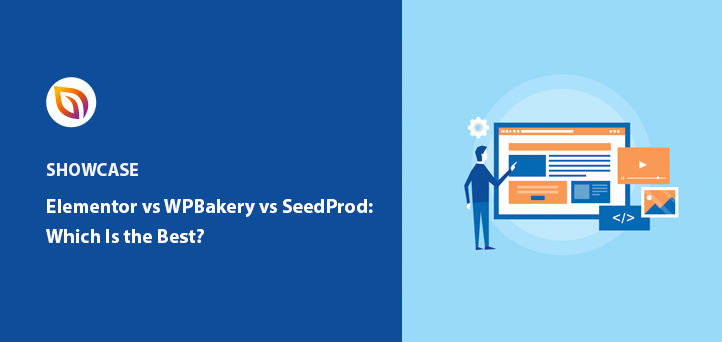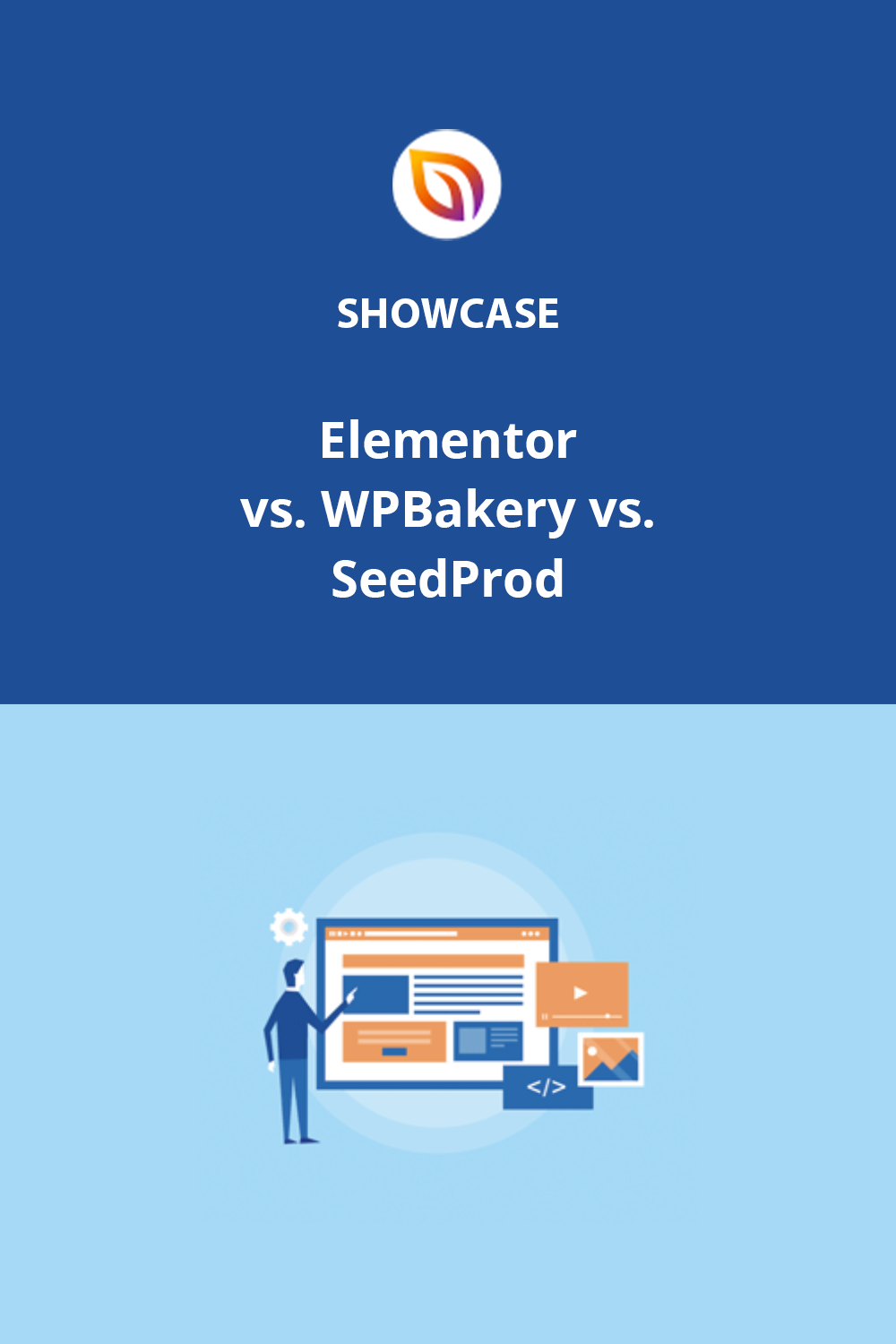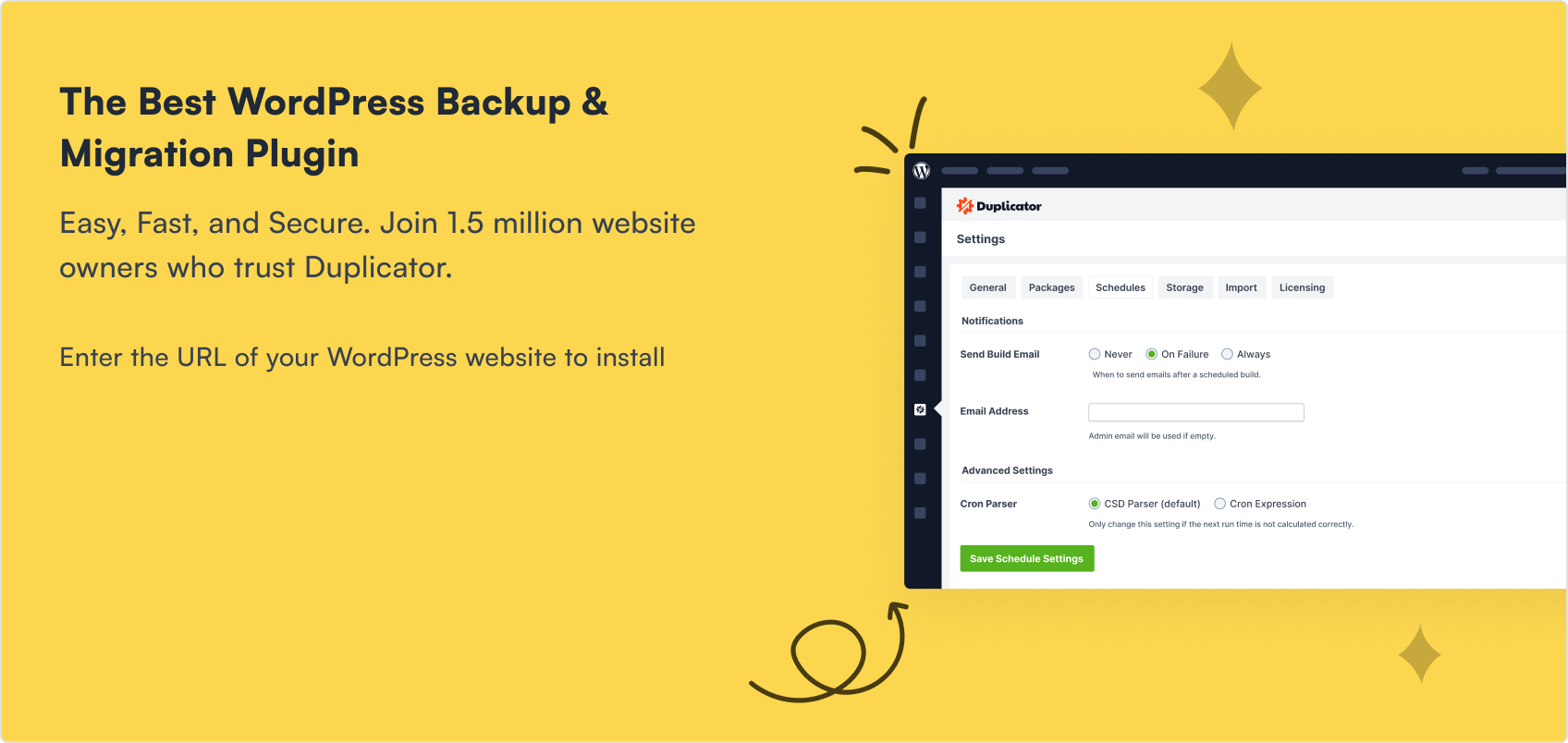Feeling stuck choosing between Elementor, WPBakery, and SeedProd for your WordPress site? These three page builders are some of the most popular, but they work very differently.
In this guide, I’ll compare them side by side so you can see which builder fits your needs best. I’ll cover ease of use, templates, flexibility, pricing, and pros/cons — and I’ll also share why I think SeedProd is the best choice if you want a fast, beginner-friendly builder that helps you create landing pages and websites that actually convert.
Quick summary:
- Elementor Overview
- WPBakery Overview
- SeedProd Overview
- Ease of Use: Which Page Builder Is Simpler?
- Templates: Who Offers the Best Designs?
- Flexibility & Page Elements: Who Gives You What You Need?
- Pricing: Which Page Builder Gives the Best Value?
- Pros & Cons: Elementor vs WPBakery vs SeedProd
- Final Verdict: Elementor vs WPBakery vs SeedProd
Summary: Elementor vs WPBakery vs SeedProd
| Feature/Aspect | Elementor | WPBakery | SeedProd |
|---|---|---|---|
| Ease of Use | Beginner-friendly but cluttered interface | Backend/frontend editors, harder to learn | Clean drag-and-drop, simplest to use |
| Templates | Large library, some layout quirks | Many templates, designs feel dated | 150+ conversion-focused templates |
| Flexibility | Lots of widgets, theme/popup builder | Wide range but shortcode-based | Marketing blocks, WooCommerce, no shortcodes |
| Pricing | From $59/year (1 site), up to $399/year (1,000 sites) | From $69 lifetime (1 site), up to $499 lifetime (10 sites) | From $39.50/year (1 site), up to $299.50/year (unlimited sites) |
| Pros | Free plan, design depth, big template library | One-time pricing, large element library | Fast, lightweight, built-in page modes |
| Cons | Can slow down sites, higher costs for Pro | No free plan, shortcode lock-in, slower performance | Advanced WooCommerce only in higher tiers |
Verdict: SeedProd offers the best mix of speed, simplicity, and value. Elementor is flexible but heavier and more expensive, while WPBakery’s shortcode lock-in makes it less practical today.
How I Compared Elementor, WPBakery, and SeedProd
When I compare WordPress page builders, I look at what actually helps you build a real site. I have used Elementor, WPBakery, and SeedProd on different projects, so I know where each one shines and where it falls short.
For this breakdown, I focused on the factors that matter most in practice:
- Ease of Use: How quickly you can start building without feeling lost.
- Templates: The quality and variety of designs that are ready to go.
- Flexibility: Whether the builder has the blocks and integrations you need without extra bloat.
- Pricing: Not just the cost, but the real value for what you get.
- Pros and Cons: The small details you only notice after using a builder for a while.
That is the lens I used to review Elementor, WPBakery, and SeedProd so you can decide which one fits your needs.
Elementor Overview
| Pricing: Starts at $49/year |
| Free Plan / Trial: Yes, free version available |
| Standout Features: |
| 🔹 Drag-and-drop live editor 🔹 Large template library 🔹 Popup & Theme builder 🔹 WooCommerce builder |
| Rating: B+ |
| Best For: Users who want lots of design flexibility and don’t mind extra options |
I first used Elementor when I needed a quick way to build a full website without touching code. Its live drag-and-drop editor made it easy to see changes instantly, and the free plan gave me enough to start.
Over time, I found the sheer number of widgets and settings powerful, but also a little overwhelming if you only need something simple like a landing page.
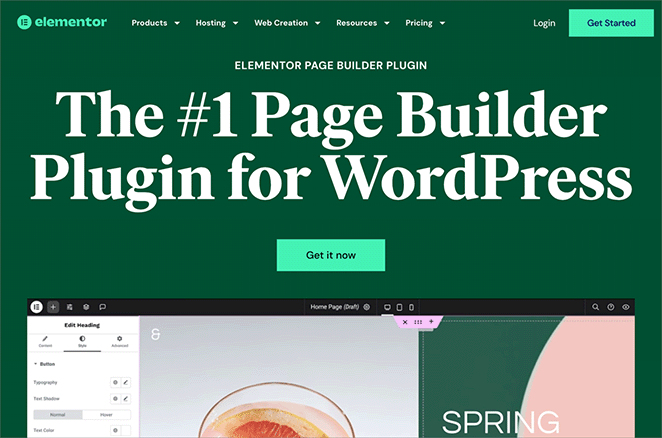
Elementor works best if you want design freedom and don’t mind a steeper learning curve. But if speed and simplicity are your main goals, it may feel like more than you need.
Why not check out this detailed Elementor review for more information?
WPBakery Overview
| Pricing: One-time payment from $45 |
| Free Plan / Trial: No |
| Standout Features: |
| 🔹 Backend & frontend editors 🔹 Large library of elements 🔹 Grid builder 🔹 WooCommerce shortcodes |
| Rating: C+ |
| Best For: Users comfortable with shortcodes who want a one-time purchase instead of ongoing fees |
When I tested WPBakery, the biggest plus was its one-time payment. For some users, that’s appealing compared to annual subscriptions.
It also has both a backend editor and a frontend visual editor, giving you two ways to build. But in practice, the backend view felt outdated, showing blocks of shortcodes instead of a true live preview.
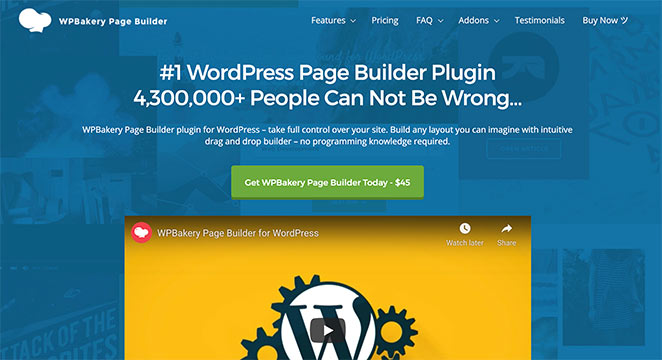
The biggest drawback I ran into is shortcode lock-in. If you ever switch away from WPBakery, it leaves behind messy code that breaks your layouts. For me, that makes it harder to recommend long term, even though it can get the job done for simple sites right now.
For more information, see our WPBakery review.
SeedProd Overview
| Pricing: Starts at $39.50/year |
| Free Plan / Trial: Yes, free version available |
| Standout Features: |
| 🔹 Drag-and-drop landing page & theme builder 🔹 150+ templates 🔹 Built-in page modes (Coming Soon, Maintenance, Login, 404) 🔹 WooCommerce integration |
| Rating: A |
| Best For: Beginners and marketers who want fast, conversion-focused pages without extra plugins |
I use SeedProd most often when I need a landing page or theme that just works without slowing my site down. The builder is clean, the blocks are easy to edit inline, and I don’t have to fight with shortcodes or complicated settings.
Unlike other page builders, SeedProd also includes page modes like Coming Soon, Maintenance, and custom Login pages right out of the box, which means fewer extra plugins to install.
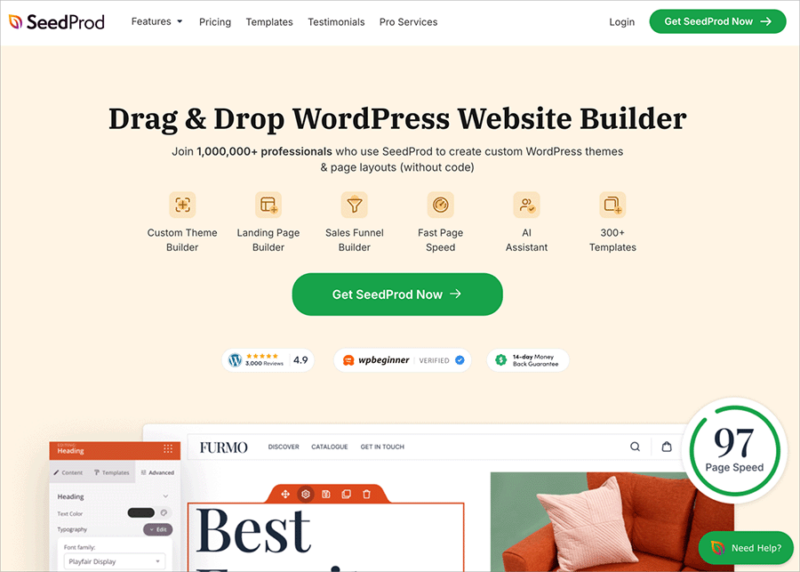
What makes SeedProd stand out for me is how lightweight and fast it is. Pages load quickly, and the builder stays responsive even with complex designs.
If your priority is creating high-converting landing pages or a custom theme without bloat, SeedProd is the easiest and most reliable choice.
Ease of Use: Which Page Builder Is Simpler?
Bottom line: SeedProd is the easiest to learn and use, Elementor is beginner-friendly but more cluttered, and WPBakery has the steepest learning curve.
Elementor Ease of Use
When I first launched Elementor, I liked how straightforward it was to start building. You click “Edit with Elementor” and the interface splits into two columns: widgets on the left, live preview on the right.
It’s a clear setup, but the panel fills quickly with options, which can be overwhelming if you just want to build a simple landing page.
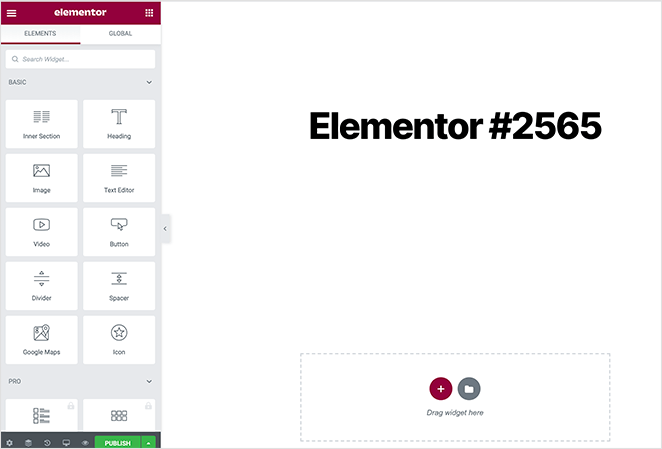
WPBakery Ease of Use
WPBakery offers both a backend editor and a frontend visual editor. On paper, that sounds flexible. In practice, the backend editor only shows shortcodes instead of a real preview, and the extra clicks to switch to frontend mode slow things down.
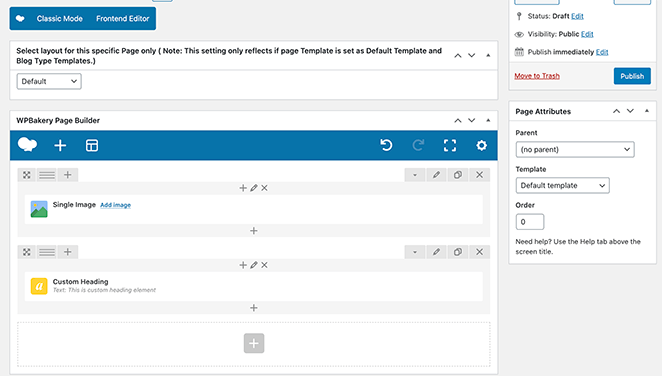
For beginners, that makes WPBakery harder to learn compared to the other two.
SeedProd Ease of Use
With SeedProd, I could build a working page in minutes. The interface is clean, blocks are drag-and-drop, and I can edit text inline without opening extra panels.

Switching to mobile view is just one click, and there’s no shortcode mess behind the scenes. For me, that makes SeedProd the most beginner-friendly of the three.
Verdict: SeedProd is the simplest and fastest option, Elementor is easy but more crowded, and WPBakery feels outdated and harder to master.
Templates: Who Offers the Best Designs?
Bottom line: SeedProd has the most practical and conversion-focused templates, Elementor has a large variety but often tied to full-width layouts, and WPBakery has quantity but feels less polished.
Elementor Templates
Elementor’s template library is big and varied, with full website kits and section blocks. When I first used it, I liked how quickly I could import a design.
The main drawback is compatibility. Many templates only display correctly if you use the “Elementor Full Width” setting, which adds an extra step to get things looking right.
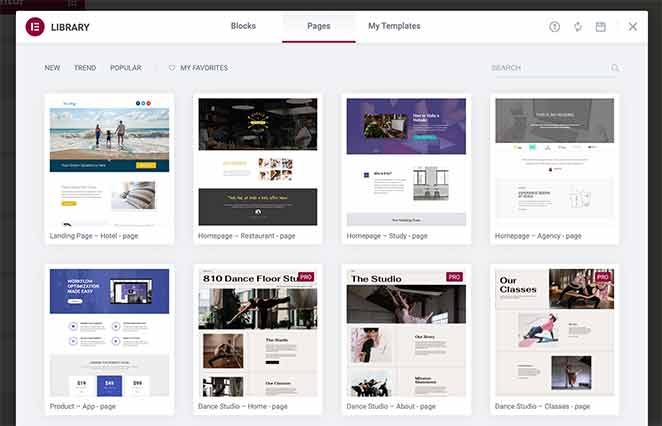
WPBakery Templates
WPBakery includes a wide selection of templates, and you can also save your own for later use.
While the variety is there, I found navigation clunky and the designs less modern compared to Elementor or SeedProd. It gets the job done but doesn’t feel as polished.

SeedProd Templates
SeedProd’s template library is built for speed and conversions. I use it whenever I need a landing page that just works — sales, webinar, coming soon, thank you, and more.
Templates load instantly, don’t depend on your WordPress theme, and are easy to tweak with the drag-and-drop builder. For me, that independence from the theme is a big win.
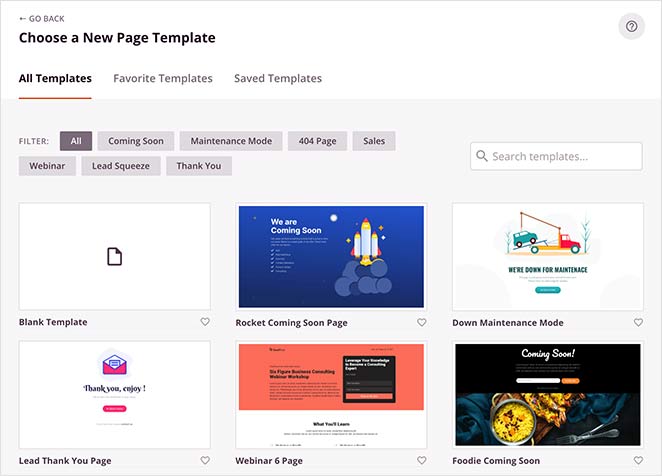
Verdict: SeedProd wins for practical, conversion-focused templates that work out of the box. Elementor comes second with variety but extra setup steps, and WPBakery trails with designs that feel dated.
Flexibility & Page Elements: Who Gives You What You Need?
Bottom line: SeedProd strikes the best balance of useful blocks without bloat, Elementor offers the most options but can feel heavy, and WPBakery has range but misses key marketing elements.
Elementor Flexibility
When I need lots of design control, Elementor delivers. You get Basic, Pro, General, Site, and Single widgets, plus Theme/Popup/WooCommerce builders.
That depth is great for full sites, but for simple landing pages it can feel like too many knobs and switches.
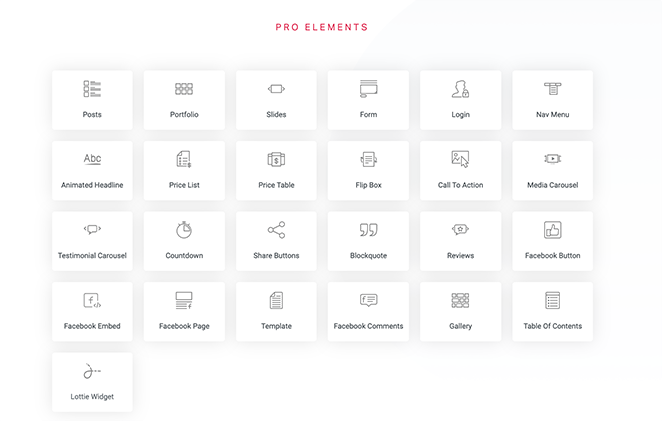
- Strengths: wide widget set, theme parts, popup builder, WooCommerce tools.
- Trade-offs: heavier UI, more settings to manage for basic funnels.
WPBakery Flexibility
WPBakery includes many content and layout elements and supports third-party add-ons. In practice, I miss native opt-in and form blocks, and relying on shortcodes makes switching later painful.
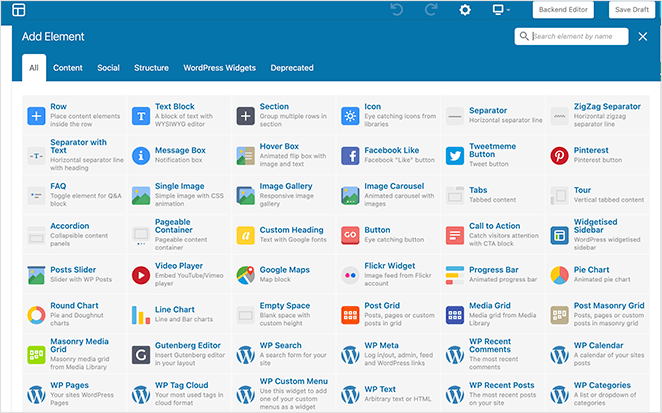
- Strengths: lots of elements, grid builder, widget support.
- Gaps: no native opt-in/contact blocks, shortcode lock-in risk.
SeedProd Flexibility
For landing pages and themes, SeedProd gives me the blocks I actually use: opt-ins, forms, timers, testimonials, pricing tables, plus WooCommerce blocks and template tags for dynamic content. It stays lightweight and avoids shortcode lock-in.
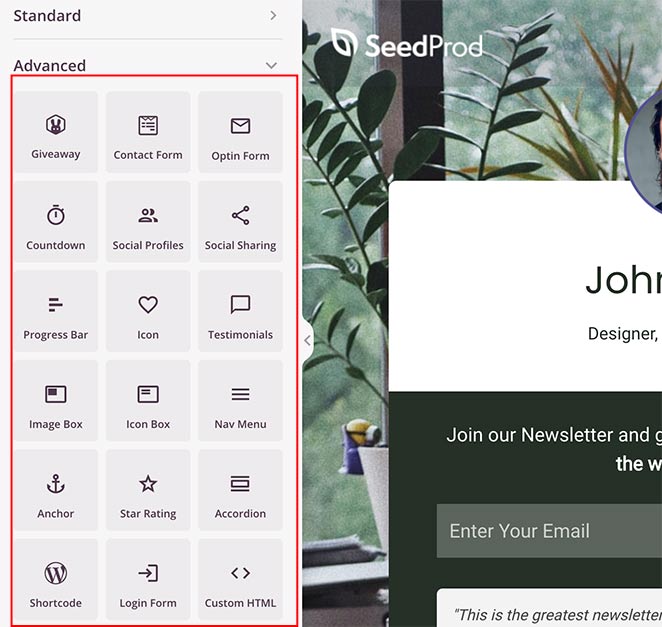
- Strengths: marketing-ready blocks, WooCommerce blocks, template tags, inline text editing.
- Bonus: sections and saved parts make reuse fast without extra plugins.
Verdict: SeedProd offers the most practical flexibility for marketers and beginners. Elementor is best if you need maximum design scope. WPBakery has range but lacks key conversion blocks and uses shortcodes.
Pricing: Which Page Builder Gives the Best Value?
Bottom line: SeedProd gives you the best value with a free plan and flexible paid tiers, Elementor offers a free plan but higher costs for advanced features, and WPBakery is cheapest upfront but lacks a free version and long-term flexibility.
Elementor Pricing
Elementor still offers a free version, but most advanced features — like the theme builder, popup builder, and WooCommerce widgets — require a Pro plan. The updated pricing is:
- Essential: $59/year for 1 website
- Advanced: $99/year for 3 websites
- Expert: $199/year for 25 websites
- Agency: $399/year for 1000 websites
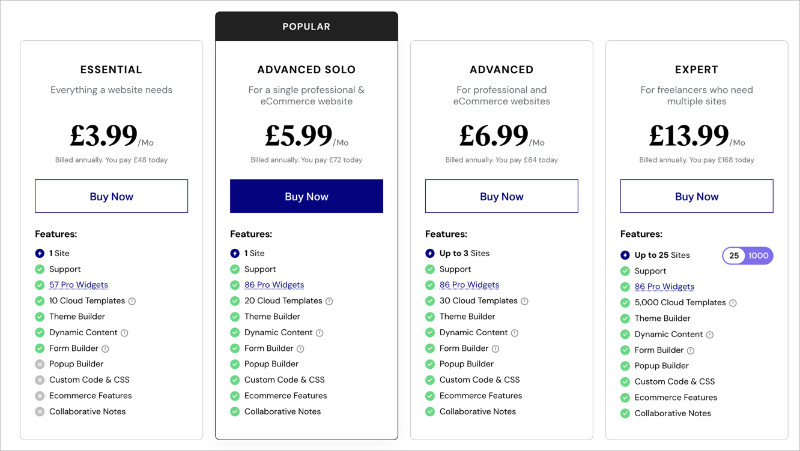
Elementor is flexible, but costs add up quickly if you manage multiple sites. The free version is handy for testing, yet most serious projects will need Elementor Pro.
WPBakery Pricing
WPBakery doesn’t offer a free version, but it does use a one-time lifetime license instead of yearly fees. The current pricing is:
- Regular: $69 lifetime for one site
- 5 Sites: $256 lifetime
- 10 Sites: $499 lifetime
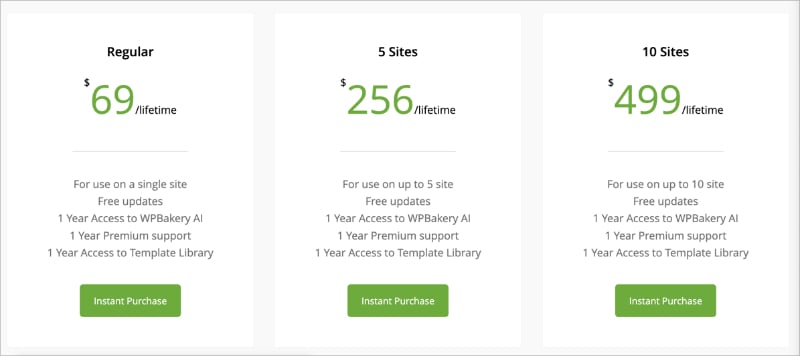
Each license includes free updates, one year of premium support, access to the WPBakery AI tool, and one year of template library access. While the lifetime model looks appealing, the lack of a free plan and the shortcode lock-in risk make it less flexible compared to SeedProd or Elementor.
SeedProd Pricing
SeedProd offers a free version that’s enough to create simple landing pages. Upgrading to Pro unlocks the theme builder, premium blocks, domain mapping, and more.
Paid plans start at $39.50/year for one site and scale up to $239.50/year for more. For me, the mix of free and affordable paid tiers makes SeedProd the best overall value.

Verdict: If you want a free plan to start and affordable upgrades as you grow, SeedProd wins. Elementor is strong but pricier at scale, while WPBakery is cheapest upfront but riskier long term.
Pros & Cons: Elementor vs WPBakery vs SeedProd
Bottom line: Elementor offers flexibility but can feel heavy, WPBakery is affordable but outdated, and SeedProd balances ease, speed, and conversions better than both.
Elementor Pros & Cons
- Pros: Large template library, flexible design options, free plan, WooCommerce tools.
- Cons: Can slow sites down, cluttered interface, advanced features locked behind higher plans.
WPBakery Pros & Cons
- Pros: One-time purchase, many elements, backend & frontend editors, multilingual support.
- Cons: No free version, shortcode lock-in, slower performance, dated interface.
SeedProd Pros & Cons
- Pros: Easy to use, lightweight, free plan available, conversion-focused templates, built-in page modes (Coming Soon, Maintenance, Login, 404).
- Cons: Fewer advanced design widgets than Elementor, WooCommerce tools only in higher plans.
Verdict: SeedProd has the strongest overall balance. Elementor is best if you want design depth, while WPBakery’s pros don’t outweigh its long-term drawbacks.
Frequently Asked Questions (FAQs)
Final Verdict: Elementor vs WPBakery vs SeedProd
After comparing all three page builders, my recommendation is clear: SeedProd is the best choice for most WordPress users.
It’s fast, beginner-friendly, and built for creating high-converting landing pages and custom themes without slowing down your site. Elementor comes second if you want design depth and don’t mind the extra complexity. WPBakery still works, but its shortcode reliance and dated interface make it harder to recommend today.
Ready to build your next site? SeedProd makes it simple to launch beautiful, conversion-focused pages in minutes.
If you found this comparison helpful, you might also like these guides:
- Best WordPress Landing Page Plugins
- Divi vs Beaver Builder vs SeedProd
- Best Website Builders for WordPress
- How to Create a Landing Page in WordPress
Thanks for reading! We’d love to hear your thoughts, so please feel free to join the conversation on YouTube, X and Facebook for more helpful advice and content to grow your business.

